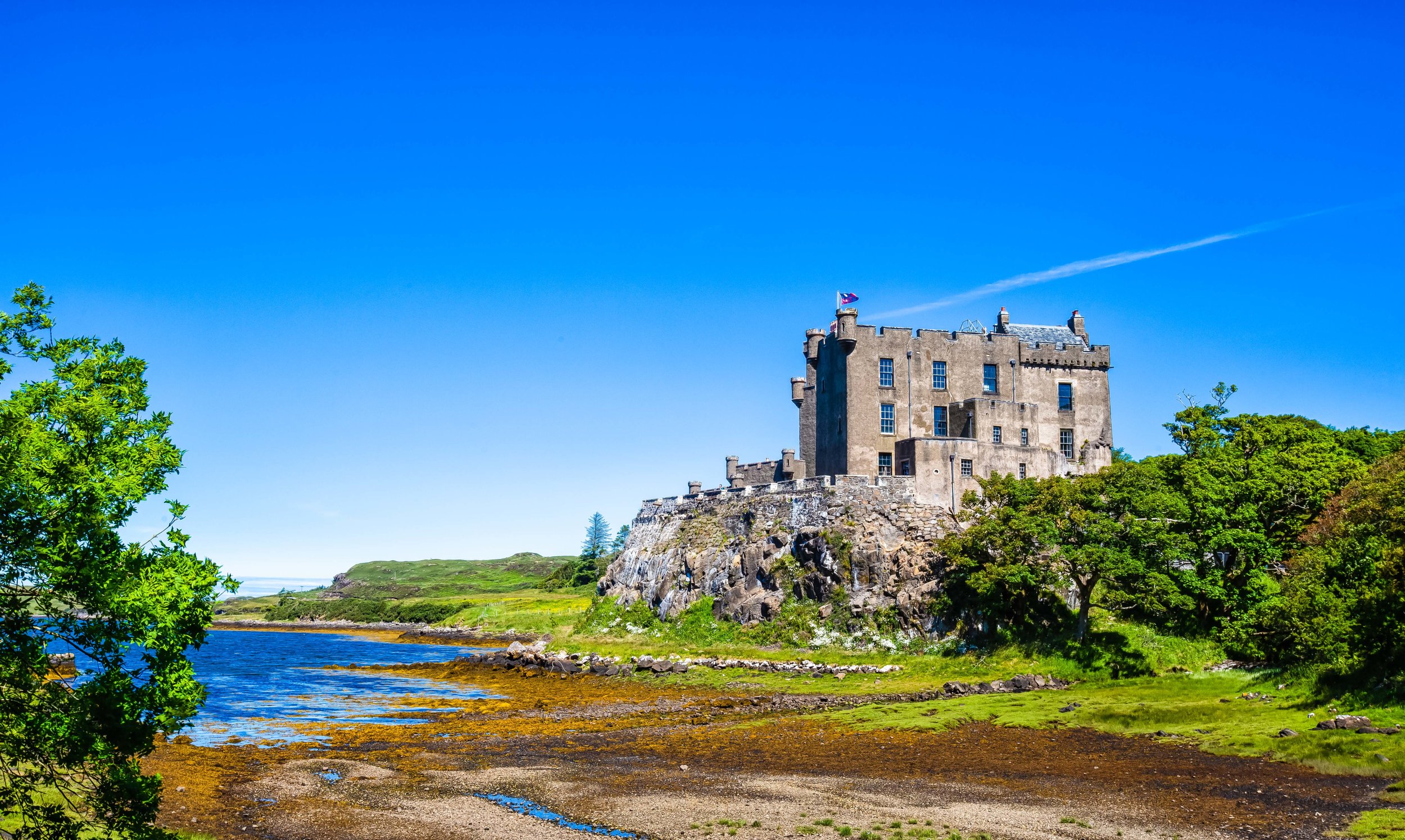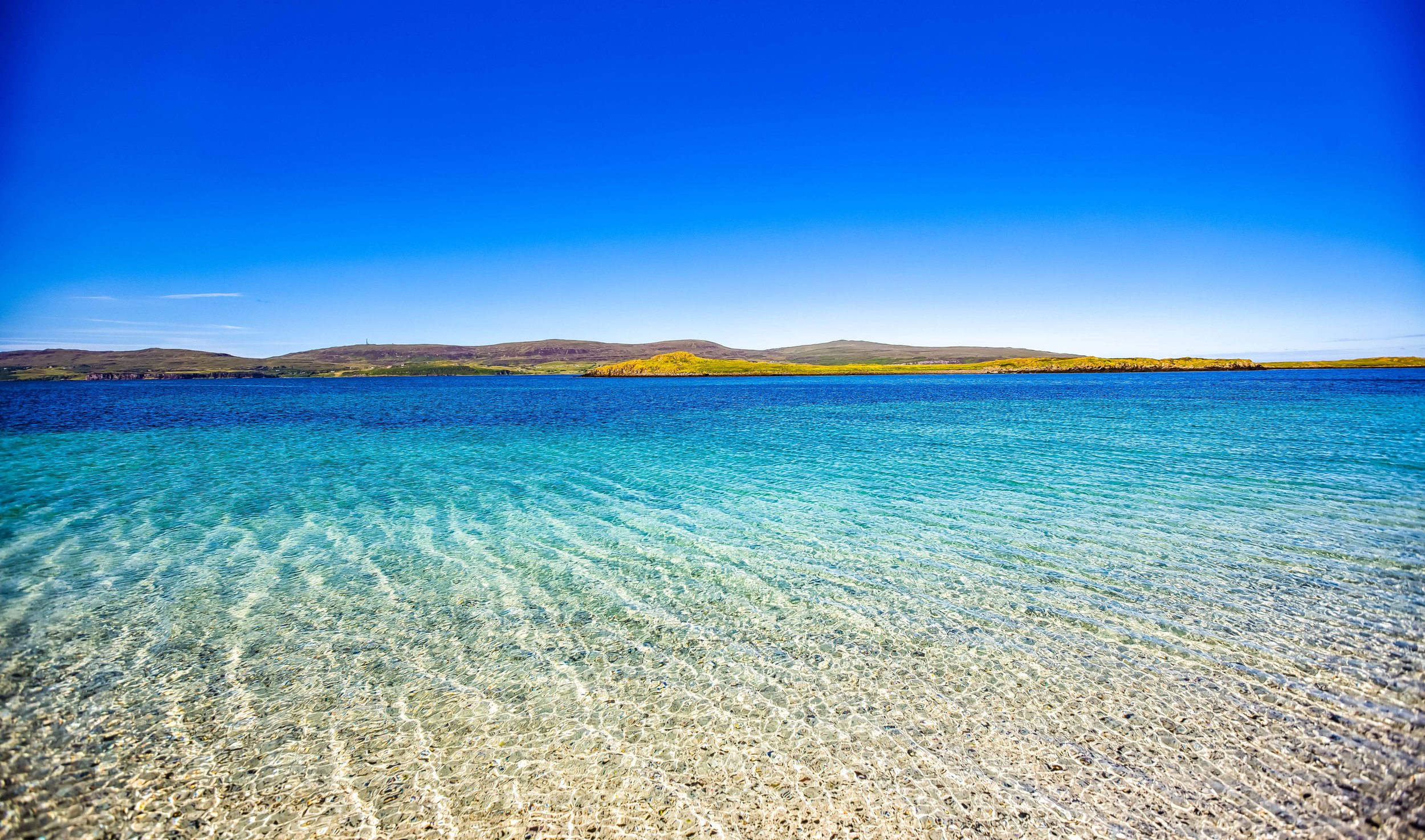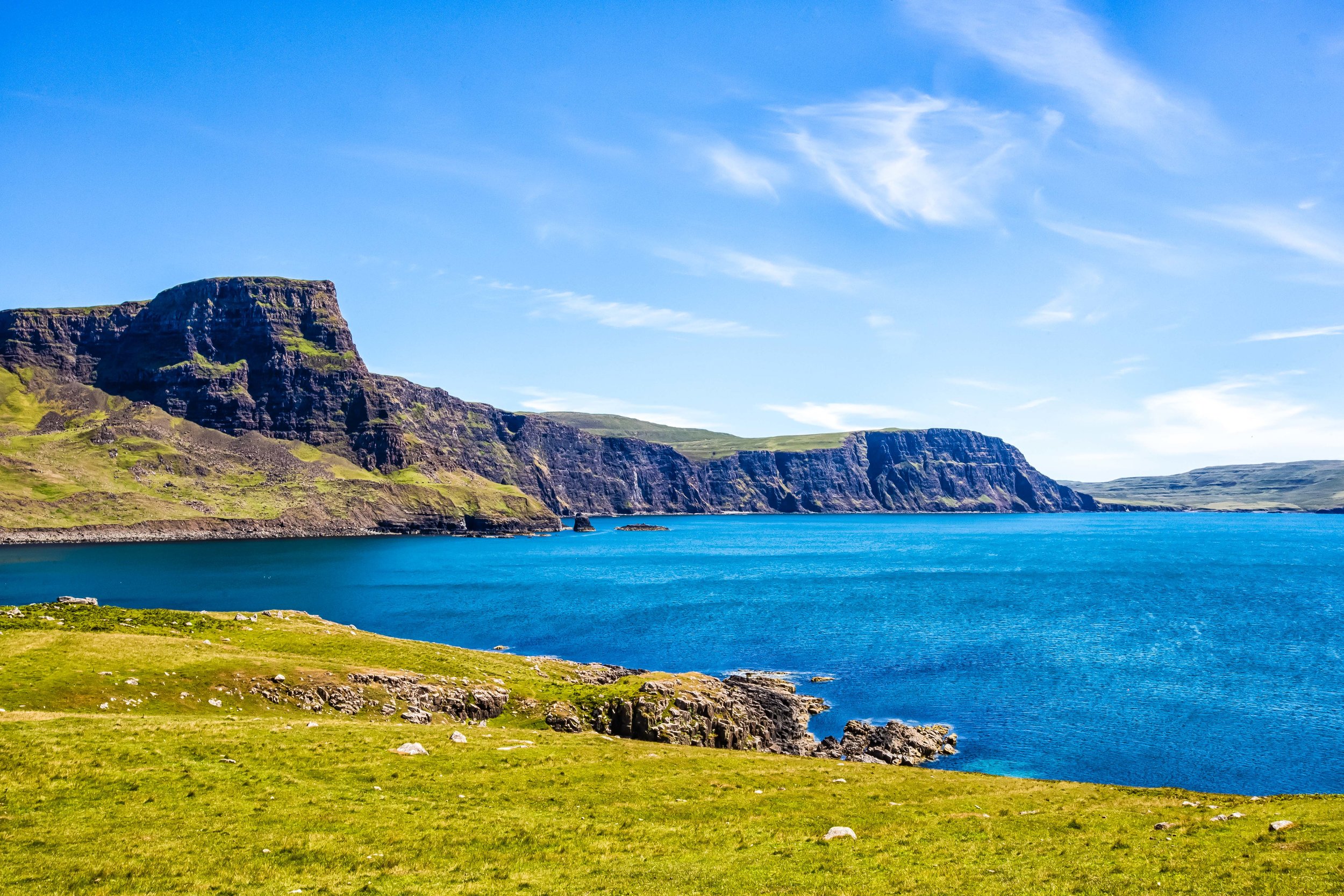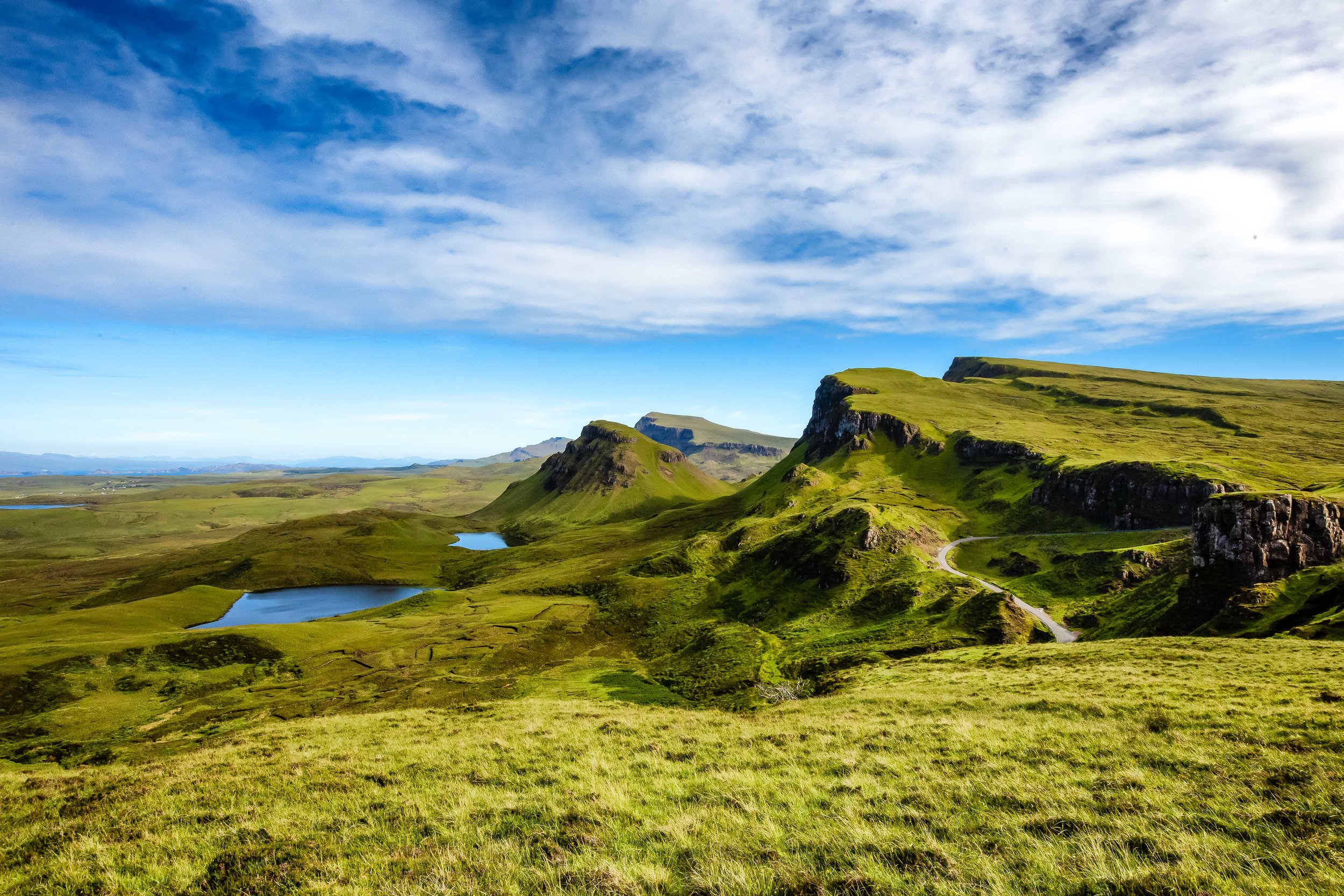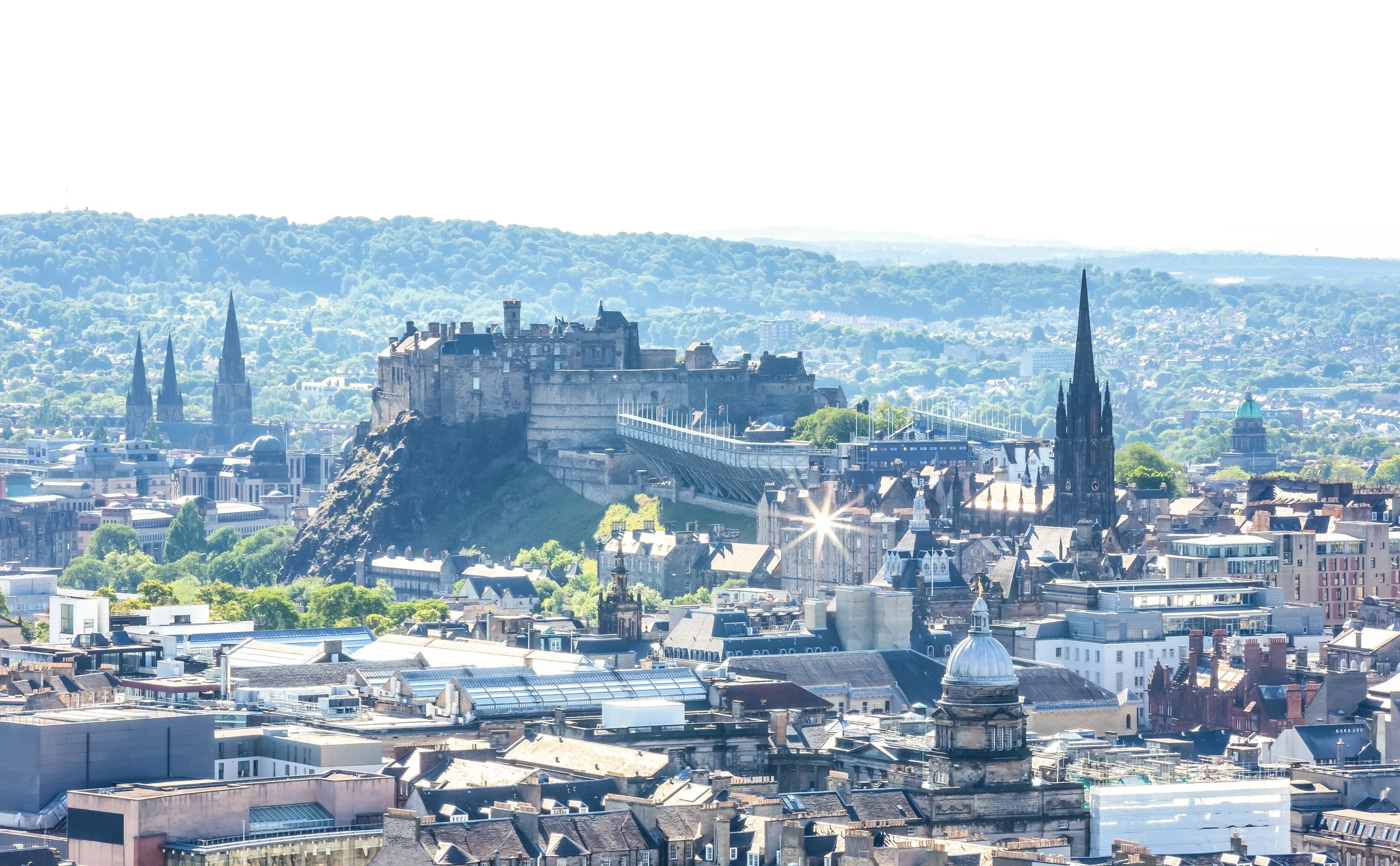After a tiring two-week long trip to Iceland, we arrived in the Scottish capital of Edinburgh for the second leg of our Europe trip.
As we boarded the airport shuttle bus to the city I could hardly contain my excitement - It would be my first time to visit the country (as an adult) and would include stops in Edinburgh, Glasgow, the Highlands and the Isle of Skye.
Admittedly I was also excited to be able to take a break from sitting in a car as the previous two weeks spent driving around Iceland were exhausting.
I figured I planned the trip quite well, we’d spend a few days exploring the capital, then we’d board a train to Glasgow and spend a few days there before once again picking up a rental car and driving around the beautiful Loch Lomond into the Highlands and ultimately ending up in the Isle of Skye where we’d spend a week.
The Isle of Skye, was once one of Scotland’s best kept secrets but has in recent years become one of the country’s top tourist attractions. Every year, especially during the summer months, the island braces itself for the throngs of tourists who come to experience Skye’s breathtaking landscapes, rugged mountains, medieval castles and quaint seaside villages.
The largest of the Inner Hebrides, a collection of islands just off the coast of the Scottish mainland, Skye has a total land area of 1,656 square kilometres and is home to just over ten thousand people with a population density of about six people per square kilometre. Taking into consideration that here in Taiwan the population density is on average around 650 people per kilometre, it was quite relaxing to drive around a place where there are more sheep than there are people!
In my excitement to visit Skye, I did lots of research about where to visit, what to do and what to eat while hanging out on the island - One night however while watching Youtube I came across a news story that talked about how tourism was actually having a negative impact on the environment as well as the people who live on the island.
The main problem it seemed was that Skye is small and there aren’t enough hotel rooms available on the island to provide space for the amount of tourists visiting. This has led to many homeowners opening up their spare bedrooms and offering them to tourists on sites like AirBnB and has in turn caused rents and real estate prices on the island to skyrocket forcing many of the young people who grew up on Skye to move elsewhere.
With an estimated 500,000 visitors each year, the tourism industry on Skye has become unsustainable and local authorities are desperate to find solutions for a long-term tourism strategy that will improve the situation for everyone.
The lack of sustainability of the tourism industry and the detrimental effect it is having on Skye has led to several major travel publications, including CNN Travel and the BBC releasing articles that suggest tourists avoid the island altogether.
Link: Skye islanders call for help with overcrowding after tourism surge (Guardian)
LInk: Tourism experts look to solve overcrowding crisis on Skye (The Scotland Herald)
Knowing this, the enthusiasm I had for my trip to the island became somewhat subdued but having already booked accommodations at an AirBnB in Portree and renting a car in Glasgow, it was already too late to cancel my plans, which meant that our time on the island would be adding to the issues faced by the people of Skye.
Being conscious of this, I decided to come up with my own solutions to be a responsible tourist, who would be able to enjoy the island like everyone else, but also contribute to the local economy and ensure that my trip wouldn’t be leaving a negative footprint on the beautiful island.
There are a lot of simple things every visitor can keep in mind to act responsibly while visiting Skye including supporting the local economy, buying local, taking local tours, making use of public transportation, visiting outside of peak times and taking your trash with you.
Link: How to avoid Isle of Skye Tourism Problems (Wow Scotland)
The Isle of Skye remains an amazingly beautiful place to visit and if you are thinking about travelling there, you should definitely make the most your opportunity to visit. It is important though that you take into consideration the issues faced by the locals and do your best to ensure that you enjoy the island as a responsible traveller.
Fortunately the time I visited wasn’t during the peak travelling season and I didn’t have to endure the traffic jams which have become quite infamous. It was also quite easy for us to support local businesses by eating at local restaurants and buying fresh local produce at roadside crofts without having to make reservations or stand in line for too long.
In the end, as we drove over the Skye Bridge back to the mainland, I was content with my trip to the island and it was a positive experience that I will always remember. The island is beautiful and the people are wonderful. It is definitely a trip that I would recommend to others but I do hope that the tourism industry on the island can sort itself out and in the meantime that the tourists who visit can practice responsible tourism by not contributing to the destruction of the environment.
I may at some point dedicate a blog to each of Skye’s major tourist destinations in the same way that I wrote about the Quiraing, but the purpose of this blog post is just to offer up some snapshots that highlight the places I visited and simply provide a brief introduction. I was fortunate to be able to commit a bit more time to the island than most tourists, so you may notice a few locations below that aren’t exactly high on the list of tourist destinations, but are still really cool places to visit nevertheless.
Old Man of Storr
The “Old Man of Storr” or just “Storr” is a short hike that has become one of the most popular destinations on the island as the so-called “old man”, a rocky crag, has in recent years become an image that symbolizes Scotland.
Situated on a rocky hill on the Trotternish peninsula, this short hike is likely where you’re going to encounter the most tourists on your Isle of Skye trip. The hike, which should take anywhere between an hour or two provides amazing picturesque views of the sea and the lakes below.
If you are visiting the Isle of Skye, this hike is probably going to be on the top of your list of places to visit.
Unfortunately we had to do the hike on two separate occasions due to extreme changes in the weather on our first visit that turned our visibility from a clear day to almost 0% visibility with crazy amounts of fog rolling in from the sea.
Still, even if you have to do the hike more than once like we did, it is well worth your time and the pictures you’ll take will be one of the highlights of your trip!
Kilt Rock and Mealt Falls
Kilt Rock is situated along the northern coast of the island on the road between the Old Man of Storr and the Quiraing.
When you stop here you’re rewarded with not only breathtaking ocean landscapes but a waterfall as well.
From the parking lot, you’ll be guided to a platform where you’re able to view the rocky coastline in addition to Mealt Falls. The rocky cliffs known as “Kilt Rock”, which you view from a distance are said to appear strikingly similar to a Scottish kilt - I don’t have much of an imagination when it comes to rock formations, so I can’t confirm whether or not that’s true.
Having just come from Iceland, the waterfall wasn’t really that impressive, but the falls, which flow over the cliffs and into the ocean are quite beautiful when combined with the rocky coastline.
Due to the angle of the platform and the cliffs however, its not easy to take photos of the falls but would be an ideal spot if you happened to bring a drone along with you.
One thing about this area I did enjoy however was the beauty of the landscape, which I think was comparable to the Qingshui Cliffs (清水斷崖), one of Taiwan’s most beautiful locations.
Even though I was a bit tired of waterfalls after a couple of weeks in Iceland, my girlfriend decided that after visiting the Quiraing that we’d stop by Kilt Rock for a second time to get nicer photos because we had better light. In the end I was quite happy that we did because the area looked much more beautiful on a day with better weather.
The Quiraing
The Quiraing is arguably the top attraction on the Isle of Skye and is listed as one of the top hikes in all of Scotland - It also just so happens to be one of the more picturesque places in the entire country.
If you haven’t already, I suggest checking out my dedicated post about the hike.
Link: The Quiraing
To briefly explain though, the Quiraing is part of the Trotternish ridge, which encapsulates much of the northernmost portion of the Isle of Skye. The geography of the landscape is what makes the Quiraing so special with breathtaking scenery, jagged rock formations and mountainous lakes and valleys.
The hike is actually quite an easy one, but the length really depends on how much time you’re willing to devote to it. For some, a short hike is enough, but for others, there is an entire circuit that will take you around and across the mountain.
Whatever you decide you do, you’re sure to have a great time enjoying some of the best scenery this planet has to offer!
Duntulm Castle
Why not include a little Urban Exploration in your trip to the Isle of Skye?
Duntulm Castle, a ruined 14th-15th century castle sits quietly on top of a hill overlooking the sea on the north coast of Trotternish. The castle was once the seat of the chiefs of Clan MacDonald of Sleat and was a strategic location in their age-old war against the rival Clan McLeod.
The castle was abandoned in 1732 with the clan moving to a new residence, Monkstadt House, which used much of Duntulm Castle’s stone for building material. Today the castle sits abandoned and ruined on top of a rocky cliff and is a popular grazing area for local flocks of sheep.
There actually isn’t that much to see when visiting this spot, but it is a great location for taking photos of the coastal landscape with a bunch of ambivalent sheep. We also enjoyed sitting near the beach enjoying the sound of the ocean with the view of the Western Isles in the distance.
Dunvegan Castle
Dunvegan Castle and Gardens on the western coast of Skye is the historic home of Clan MacLeod and is one of the most popular tourist attractions on the island. The castle, which is a mixture of medieval and Victorian architecture is the Isle of Skye’s most well preserved castle and is home to many historic relics pertaining to the history of the island.
The castle is open year round for tourists and the price of admission allows you to explore the interior of the castle as well as the beautifully maintained gardens.
The interior of the castle was completely refurbished in the 19th Century and is probably not what you’re really expecting. The tour however is interesting and you can learn a lot about the history of the area and the history of the McLeod clan as well.
The castle’s gardens on the other hand deserve your attention just as much as the castle as the groundskeepers have done an amazing job crafting and maintaining the area, especially with the multitude of plants, trees and flowers that are not native to Scotland’s climate.
Coral Beach
You likely weren’t expecting to find a tropical beach as far north as the Isle of Skye, but this coral beach, a short distance away from Dunvegan Castle is probably one of the prettiest beaches in the whole of Scotland.
From the parking lot, you’ll have to walk for a short distance before arriving at the beach, but the short hike will be well worth your time as the white sand beach made up of broken coral is extremely picturesque, especially with the emerald green water.
While this isn’t a popular stop for most tourists, the beach is well worth your time, especially since the walk takes you through an extremely quiet and peaceful coastal area. If I had of known how beautiful this place was going to be before going, I would have prepared a romantic picnic for my girlfriend!
Neist Point
Neist Point is the most westerly area on the Isle of Skye and is home to one of Scotland’s most famous lighthouses, the century-old Neist Point Lighthouse. The point is one of the Isle of Skye’s most famous attractions as it looks out towards the expansive Atlantic Ocean.
Visiting the area requires a bit of a hike down a steep hill but also rewards visitors with stunning landscapes, coastal scenery and the historic lighthouse. The area is also a popular spot for birdwatching with several species of seabirds making their homes on the cliffs near the lighthouse. If you’re lucky you might also be able to see whales and dolphins feeding in the cove.
Taking into consideration the popularity of the area, the roads that lead up to it are a major concern and is an area where Skye’s infamous traffic congestion becomes an issue. Not only is there a lack of signage pointing you in the direction of Neist Point, the roads are narrow and are often full of cars on both sides in addition to (what seems like) thousands of grazing sheep. You need to be really careful while driving and make sure that you yield to on-coming traffic.
Once you arrive however the parking lot is quite large, so you don’t need to worry too much about not being able to find a space. The area is also quite large, so you don’t need to worry about a bunch of annoying tourists ruining your photos!
Dun Beag Broch
Dun Beag Broch is one of the places I listed as a possible location to stop, but to tell the truth I didn’t really know what it was. On our way back to Portree from Neist Point we decided to stop by to check it out and as we approached we got a little more confused.
Was it a castle? Was it a fort? We had no idea.
I opened up the dictionary app on my phone and searched the word ‘Broch’ and this is what I found: A circular stone tower built around the beginning of the Christian Era, having an inner and outer wall, found on the Orkney Islands, Shetland Islands, the Hebrides and the mainland of Scotland.
So basically it was an Iron-Age tower-like fort?
No one knows for certain when the broch was constructed, but what historians do know is that this style of fort became common around 500 BC and it was continuously occupied well into the medieval period and as late as the 19th century. Several excavations have taken place to find out more about it and although exact dates of its origins are still a mystery, archaeologists have discovered coins dating back to the 12th Century.
Today the broch is in ruins but what was once (probably) a ten meter tower with several floors and thick stone walls has been partially excavated to show the passageways of the interior of the building.
Although there isn’t much to see here, its pretty cool to be able to so freely walk up to a several thousand year old fort where people from the iron-age once lived.
Eilean Donan Castle
While not actually located on the Isle of Skye, Eilean Donan Castle, one of Scotland’s most picturesque castles is situated a short distance away from the Skye Bridge and is a must-stop location for anyone making their way to the island.
The 13th Century castle which literally sits on the ‘Island of Donnán’ was the historic home of the Clan MacKenzie and their allies, the McRae’s. The castle has a long and interesting history and it is said to have been one of the locations that sheltered Robert the Bruce while he was on the run during the early years of his reign as King of Scotland.
The castle was destroyed in the early eighteenth century due to the MacKenzie’s involvement in the Jacobite rebellions but would be rebuilt between 1919-1932 by a member of Clan McRae who converted it into a memorial for the members of the clan that perished during the First World War.
Fun fact: The memorial is inscribed with the poem “In Flanders Fields” which was penned by John McRae, who would coincidentally become one of the clan’s most well-known figures.
Today the castle is one of the most photographed places in all of Scotland and has been featured in films ranging from the Highlander to James Bond and has even made an appearance in a Bollywood film!
As one of Scotland’s most widely photographed locations, it is also a popular tourist attraction with tours of the castle taking place year round for the admission of about £10.00 per guest. If you can afford the hefty price and the long waiting list, you could also hold your wedding at the castle!
As I’m sure you can see, there is quite a bit to do while travelling around the Isle of Skye - I’ve only really touched on part of what the island has to offer. There’s so much more that you can see and do while on Skye including visits to whisky distilleries, dining at one (or more) of the several Michelin starred restaurants, boat tours, camping, hiking etc.
You should of course take into consideration the fact that the island has been inundated with tourists, but if you do your part, you can help become part of the solution rather than part of the problem.
If you have the chance to visit, I hope you’re able to enjoy your adventure as much as we did!





























